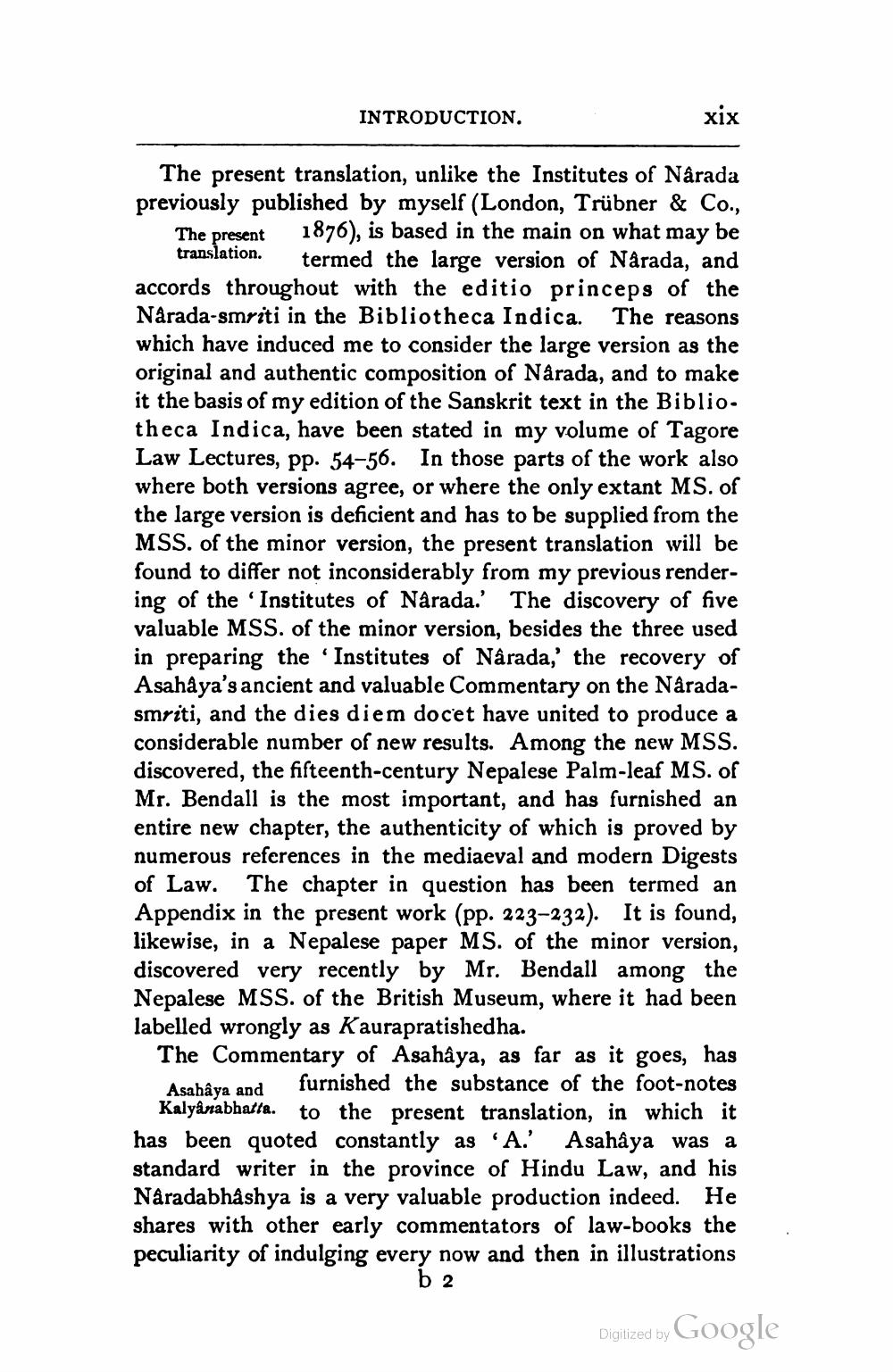________________
INTRODUCTION.
xix
The present translation, unlike the Institutes of Narada previously published by myself (London, Trübner & Co.,
The present 1876), is based in the main on what may be
translation. termed the large version of Narada, and accords throughout with the editio princeps of the Narada-smriti in the Bibliotheca Indica. The reasons which have induced me to consider the large version as the original and authentic composition of Narada, and to make it the basis of my edition of the Sanskrit text in the Bibliotheca Indica, have been stated in my volume of Tagore Law Lectures, pp. 54-56. In those parts of the work also where both versions agree, or where the only extant MS. of the large version is deficient and has to be supplied from the MSS. of the minor version, the present translation will be found to differ not inconsiderably from my previous rendering of the Institutes of Narada.' The discovery of five valuable MSS. of the minor version, besides the three used in preparing the Institutes of Narada,' the recovery of Asahaya's ancient and valuable Commentary on the Näradasmriti, and the dies diem docet have united to produce a considerable number of new results. Among the new MSS. discovered, the fifteenth-century Nepalese Palm-leaf MS. of Mr. Bendall is the most important, and has furnished an entire new chapter, the authenticity of which is proved by numerous references in the mediaeval and modern Digests of Law. The chapter in question has been termed an Appendix in the present work (pp. 223-232). It is found, likewise, in a Nepalese paper MS. of the minor version, discovered very recently by Mr. Bendall among the Nepalese MSS. of the British Museum, where it had been labelled wrongly as Kaurapratishedha. The Commentary of Asahầya, as far as it goes, has
and furnished the substance of the foot-notes Kalyanabbatta. to the present translation, in which it has been quoted constantly as 'A.' Asahaya was a standard writer in the province of Hindu Law, and his Naradabhåshya is a very valuable production indeed. He shares with other early commentators of law-books the peculiarity of indulging every now and then in illustrations
b
2
Digitized by Google




